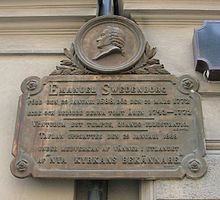Primary theological works
These are listed chronologically, as published.
- Arcana Coelestia (sometimes known as Heavenly Secrets, or Secrets of Heaven) (1747-1756) An extensive verse by verse explanation of the deeper levels of meaning of Genesis and Exodus describing the spiritual development of a human being and the nature of the Divine. (Published in 12 volumes.)
- Spiritual Diary (sometimes called Spiritual Experiences) (1747-1763) Swedenborg’s personal notebooks documenting his experiences in the spiritual world and his reflections on them. They were unpublished until the mid 1800s.
- Heaven and Hell (1758) A description of the structure and phenomena of the Spiritual World. See Book Store entry
- Earths in the Universe (1758) Conversations Swedenborg had with people in the Spiritual World who said they were from other planets in the universe.
- The Last Judgment (1758) Description of events in the Spiritual World preparing the way for the establishment of the New Church.
- The White Horse (1758) A brief explanation of the meaning of the white horse with its rider from the Book of Revelation, chapter 19, as the Divine truth of the Lord's Word.
- The New Jerusalem and Its Heavenly Doctrine (1758) A brief summary of the fundamental doctrines of the New Church with extensive references to the Arcana Coelestia for further reading.
- The Doctrine of the Lord (1763) A brief work summarizing the teachings about God) His Divinity and Humanity) with extensive references to the Old and New Testaments.
- The Doctrine of the Sacred Scripture (1763) A brief work summarizing the teachings on the nature of revelation.
- The Doctrine of Life (1763) A brief work describing the qualities which comprise a life of good which leads to heaven.
- The Doctrine of Faith (1763) A brief work explaining the nature of faith and its role in the life of regeneration.
- A Continuation Concerning the Last Judgment (1763) A continuation describing various erroneous beliefs about the Divine and the path of spiritual development.
- Divine Love and Wisdom (1763) A philosophic treatment of creation: how the Divine finited Himself to produce the natural world and the human race.
- Divine Providence (1764) A thorough explanation of how the Lord leads people in freedom to become angels in heaven; as well as, why He allows evils to occur.
- Apocalypse Revealed (1766) A two volume, verse-by-verse treatment of the Book of Revelation.
- Conjugial Love (also known as Married Love or Marriage Love) (1768) An explanation of the sources of love in marriage, and a practical guide on how husbands and wives can grow ever closer, forming an eternal union.
- A Brief Exposition of the Doctrine of the New Church (1769) A point by point comparison of fundamental Catholic and Protestant doctrines with the teachings of the New Church.
- Inter-relationship of the Soul and Body (1769) A brief description of the relationship and interaction between the spiritual and natural realms.
- True Christian Religion (also known as True Christianity)(1771) A two volume comprehensive overview of the fundamental doctrines of the New Church, including the Lord, the Ten Commandments, Faith, Charity, Repentance, Reformation, Regeneration, Holy Supper, Baptism, and the Second Coming.
Primary scientific and philosophic works
- Principles of Chemistry (1720) Swedenborg's first effort at explaining creation.
- Miscellaneous Observations (1722) A second attempt at explaining creation.
- The Principia (1734) Swedenborg's full explanation of creation, including an introduction on the means leading to a true philosophy.
- The Infinite and Final Cause of Creation (1734) A philosophical argument for the existence of God based upon the order in nature.
- The Economy of the Animal Kingdom (1740-1741) An anatomical work looking at blood, embryology, etc., seeking an answer as to how the soul operates in the body. This is Swedenborg's first clear articulation of the doctrines of discrete degrees and correspondences.
- The Fiber (1741) Contains Swedenborg's doctrine of physical forms.
- The Rational Psychology (1743) An exploration of the workings of the mind as a "mixed intellect" between the soul and the "animus."
- The Animal Kingdom (1744-1745) A second effort at explaining how the soul operates in the body. Includes material on the five senses and generation.
- The Worship and Love of God (1745) An allegorical depiction of creation by God.



